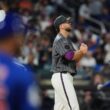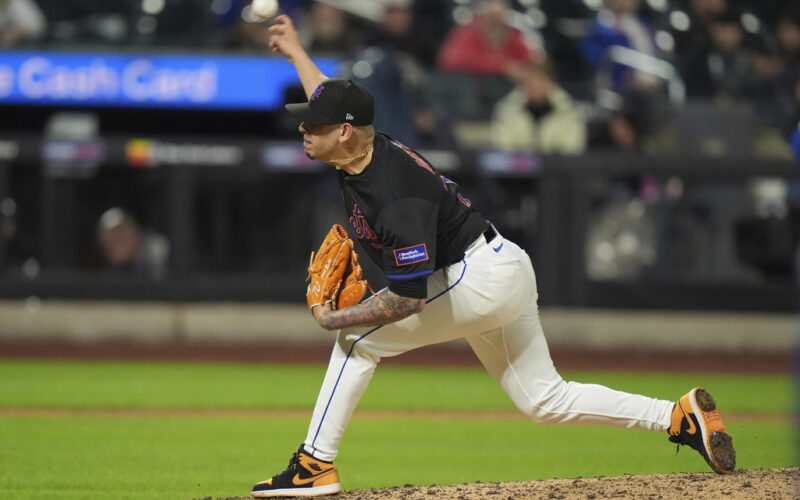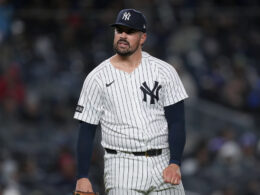The Mets previously possessed the best bullpen in baseball, featuring a group that carried the team through much of April. Now, with their two lefties out for the season and a heavy innings load, it’s become more challenging to replicate that April success.
The Mets are up for the challenge, but they’ll need more from right-hander Dedniel Nuñez and consistency from right-hander Jose Butto.
For the most part, Butto has pitched well this season, going 2-0 with a 3.27 ERA and a 3.65 FIP over 22 innings, the third-most on the team behind Max Kranick (22 2/3 innings) and Huascar Brazobán (22 1/3).
Butto hasn’t been immune to blowups, but some are to be expected for a pitcher who has never gone a full season as a reliever, especially since he’s often called on to get more than three outs. Early in the season, Butto was trying to work the corners and was getting in trouble with it at times. He ended up in bad counts, and had to throw his fastball in the zone as a result.
“I feel like when he’s trying to get ahead, [hitters] are attacking him early in counts,” manager Carlos Mendoza said Saturday at Citi Field. “When he’s not getting ahead, obviously he’s getting behind, right? So then he’s got to come in and find the zone and they’re getting him.”
When Butto is on, he’s missing bats or getting outs on the ground. But when he’s not, there’s a lot of hard contact. Friday night against the Chicago Cubs, Michael Busch took him deep in the ninth inning, getting a hold of a changeup.
Earlier in the season, Butto was trying to be too perfect in working the corners. Now, he’s making an effort to go right after hitters.
“I think I needed to be more in attacking mode with the heater,” Butto said. “I know I had a little bit of trouble with that in the beginning [of the season], but now I feel more comfortable. I feel I’m able to be more consistent and I’ve seen the results in the last couple of outings.”
He remedied that approach immediately Friday night, striking out the next hitter.
The learning curve has lessened for Butto after pitching out of the bullpen for much of last season. He now understands how to remain engaged with the game and specific situations late in games, and he knows how to take care of his body in between outings. It helps that the former starter typically pitches more than one inning. That renders him unavailable for a few days after that, allowing him to recover, get treatment and work on his mechanics.
Butto has also learned how to handle the unpredictable nature of relief pitching.
“It’s a different mental side of the game,” Butto said. “Sometimes if you throw an inning, they give you an extra day. But sometimes you’ve got to be ready for the next day. Even if you feel tired or sore, you’ve got to be ready mentally, especially to compete that day.”
Nuñez, however, is a different story.
A great story last year as a 27-year-old fireballing rookie, Nuñez started the season in Triple-A so he could build up slowly. A flexor strain ended his season in August last year, and the Mets didn’t want to re-aggravate anything in his elbow.
But his first two outings since returning to the big leagues have been disappointing. He wasn’t able to get an out in Arizona last week, and all three runners eventually scored after he left the game. Friday night against the Cubs, he faced four batters, walking two and striking out two.
“He’s having a hard time throwing strikes,” Mendoza said.
Some of the pitches he threw against the Cubs and the Diamondbacks were described as “non-competitive,” a damning indictment for any pitcher. The Mets hope to use him in high-leverage situations again, especially with A.J. Minter out for the rest of the season, but they’ll have to find a few more low-leverage innings to work him in before they can entrust him with the important ones.
“This is a guy that we saw last year, he’s got good stuff, but he’s not afraid to attack hitters,” Mendoza said. “Right now, I feel like he’s having a hard time throwing strikes.”








